#acoma
Text

I Went to my Territory
Joe Seymour Jr
35 notes
·
View notes
Text
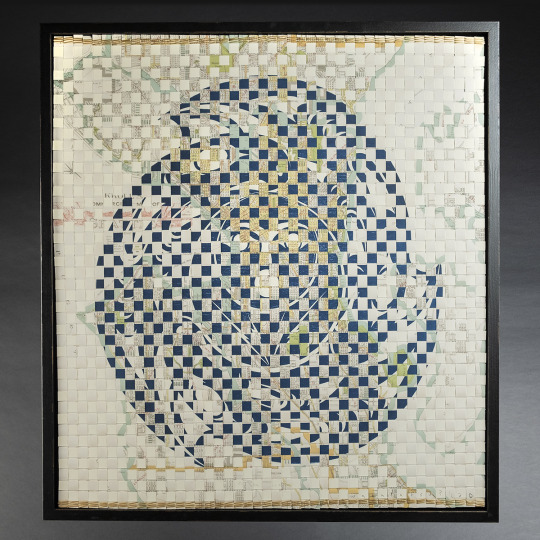

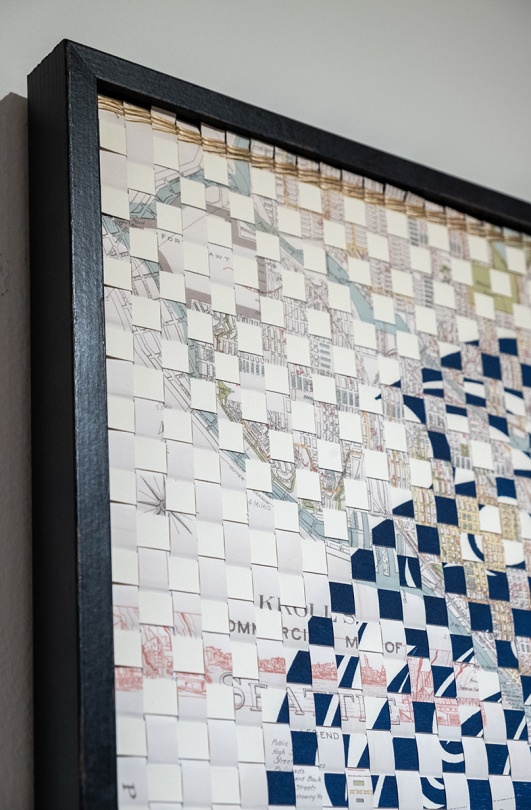

Our Culture Is Woven Into the Land
Joe Wahalatsu? Seymour Jr. (Squaxin/Acoma Pueblo)
woven paper, synthetic sinew, framing. 32.35” x 37.75”
#weaving#joe seymour jr#wahalatsu?#joe wahalatsu? seymour jr#acoma pueblo#acoma#pueblo#squaxin#indigenous art#native art#first nations art#ndn art
17 notes
·
View notes
Link
Excerpt from this story from Inside Climate News:
As a young girl, Arlene Juanico would rush to gather the laundry before the explosions started.
When the alarms sounded, Juanico would hustle to grab the clean garments off the clothesline before she was enveloped by dust clouds. But Juanico’s little legs usually couldn’t get her back to shelter in time.
That’s when the yellow-flecked dust—emerging from detonations in the sacred mesa the Laguna tribe knows as Squirrel Mountain—would catch up to her. That’s when it would enter Juanico’s throat, burrowing deep into her lungs.
It’s the same dust she would confront when, as an adult, she worked for the Anaconda Copper Co.
And it’s the dust that would persist in her lungs, kidneys and bones. There, hidden in the dark recesses of her chest, the particles lay until one day decades later a CT scan would show Juanico and people like her why they hadn’t been able to take a full breath in decades. They’d get a similar diagnosis—idiopathic pulmonary fibrosis—one mangled lung at a time.
As such, the dangers of one of the largest uranium mines in American history didn’t abate when the dust clouds dissipated.
Today, hundreds of mines lie abandoned across New Mexico’s Indigenous lands. So do scores of eroding radioactive landfills meant to bury uranium mine waste.
As a result, when the coronavirus struck in 2020, the Laguna—already afflicted by diseases that made it hard to walk, speak or breathe—were set up for severe Covid, said Loretta Anderson, a home health aide who is Laguna. So many of her people succumbed during the pandemic that the tribe enlarged its graveyard.
Federal guidance and state data suggest the same is true for thousands of Navajo and Acoma who were exposed to uranium before suffering life-threatening cases of Covid.
Now, these communities fear what the future holds for their wellbeing, health and culture.
168 notes
·
View notes
Text
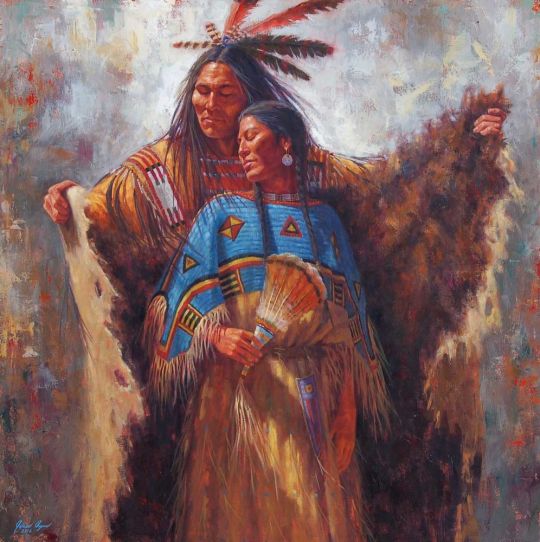
«I love you» in different Native American languages
Qunukamken = I love you (Alutiiq Language, Alaska)
Chiholloli = I love you (Chickasaw, Oklahoma)
Ayóó’áníínísh’ní = I love you (Diné, Navajo, Arizona/New Mexico)
Moo ‘ams ni stinta = I love you (Klamath-Modoc, Oregon)
Ktaʔwãanin = I love you (Mahican Dialect, Stockbridge-Munsee Tribe of Wisconsin)
Konnorónhkwa = I love you (Mohawk, New York)
In ‘ee hetewise = I love you (Nimiipuutimpt, Nez Perce Tribe, Idaho)
Nu Soopeda U = I love you (Northern Paiute, Nevada)
Gizaagiin = I love you (Ojibwa/Bad River Ojibwe, Wisconsin)
Kunoluhkwa = I love you (Oneida Tribe, Wisconsin)
Thro sii muu = You are dear to me (Pueblo of Acoma, Acoma Keres dictionary, New Mexico)
Eee-peinoom = I love you (Pueblo of Isleta, New Mexico)
Amuu-thro-maa = I love you (Pueblo of Laguna, Laguna Keres dictionary, New Mexico)
Shro- tse-mah = I love you (Pueblo of San Felipe, San Felipe Keres dictionary, New Mexico)
‘Ho’doh’ee’cheht’mah = I love you (Pueblo of Zuni, New Mexico)
Kʷ in̓x̣menč = I love you (Salish, Washington)
Gönóöhgwa’ = I love you (Seneca Tribe, New York)
Ixsixán = I love you (Tlingit, Alaska)
I daat axajóon — I’m dreaming of you (Tlingit, Alaska)
Ma ihkmahka — I love you (to a male) (Tunica, Tunica-Biloxi Tribe of Louisiana)
Hɛma ihkmahka — I love you (to a female) (Tunica, Tunica-Biloxi Tribe of Louisiana)
#Native American#NativeAmerican#Alutiiq#Chickasaw#Diné#Navajo#Klamath-Modoc#Mahican#Mohawk#Nimiipuutimpt#Paiute#Ojibwa#Ojibwe#Oneida#Acoma#PuebloofIsleta#PuebloofLaguna#PuebloofSanFelipe#PuebloofZuni#Salish#Seneca#Tlingit#Tunica#Love#Amor#foryou#parati#fyp#foryoupage
6 notes
·
View notes
Text
“Tomorrow’s dawn is a promise that will fulfill.
Never mind if the sky does not quite agree.”
- Simon Ortiz, Acoma poet, "The Promise We Live By" from After and Before the Lightning.
#native american heritage month#poem fragment#poetry#indigenous#indigenous poetry#Simon Ortiz#acoma#Acoma Pueblo#ndn#ndn tag#native American#first nations
5 notes
·
View notes
Text

“Parrot Pot, by Wanda Aragon. Acoma, New Mexico, 1998.”
5 notes
·
View notes
Text
0 notes
Text


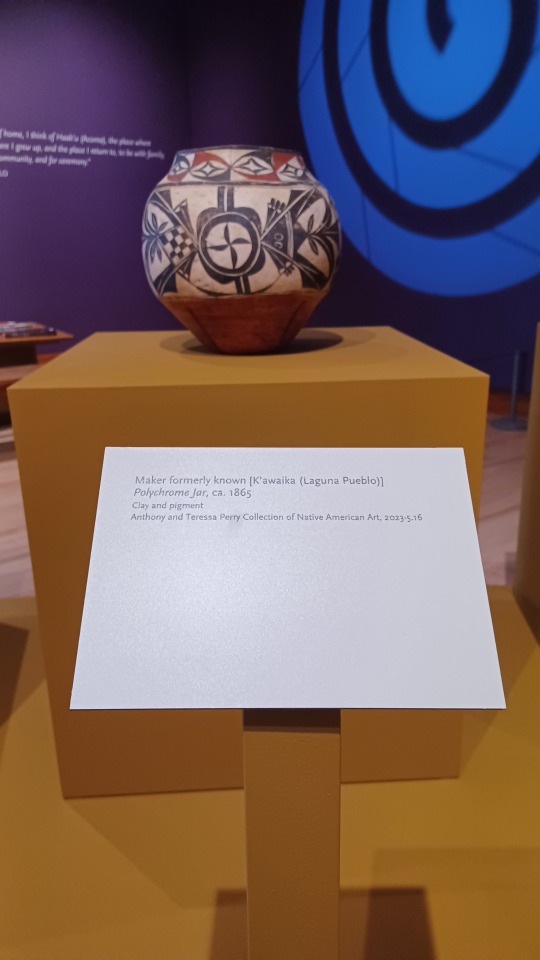



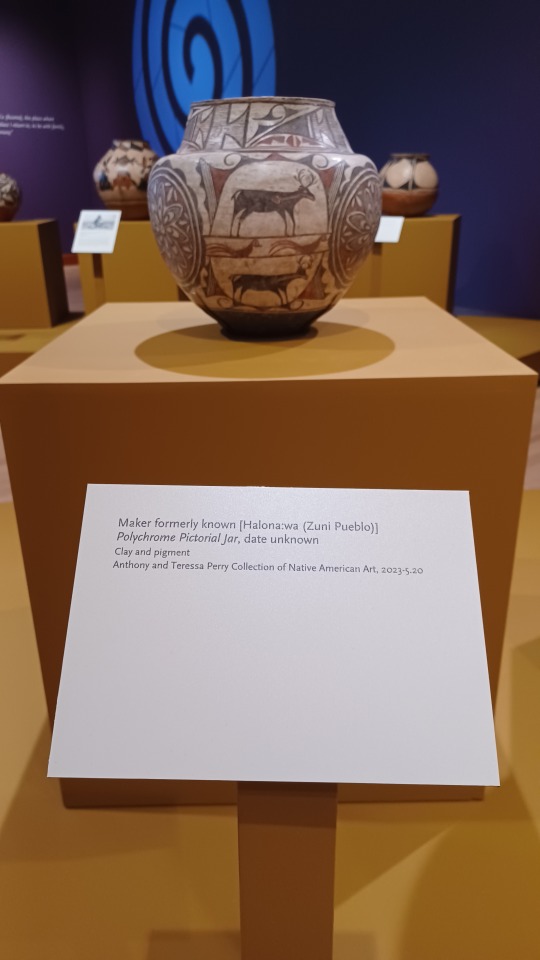








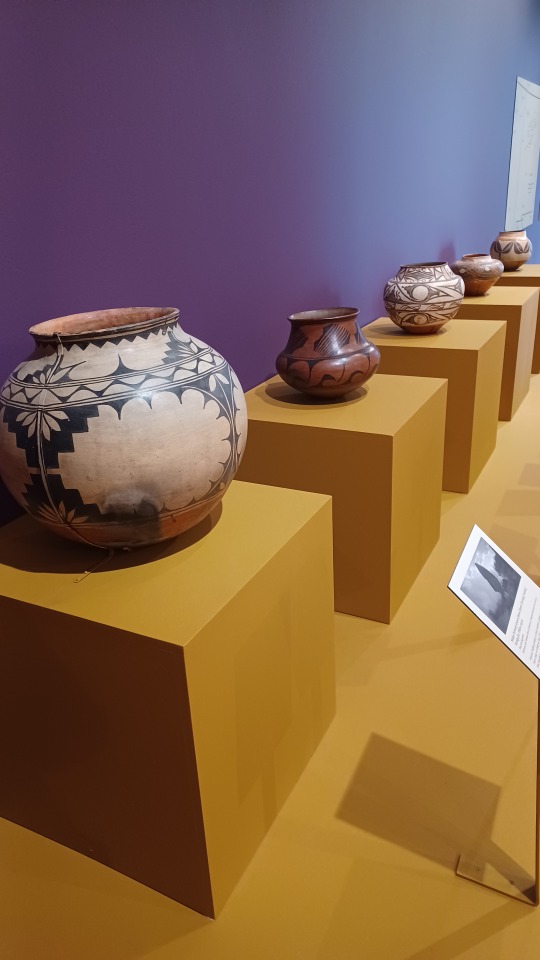

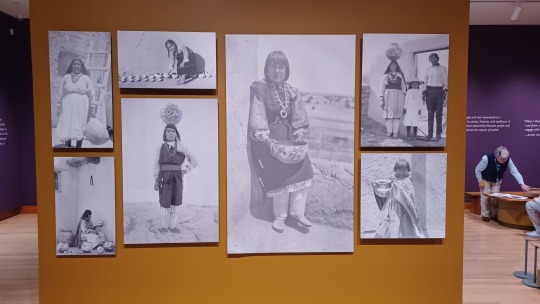
In 2023 a collection of Native pottery from the American Southwest was featured in the Pizzagalli Gallery at the Shelburne Museum, Vermont, USA. These earthenware jugs, formed by molding long, long strands of clay outward and upward in a spiraling pattern to build the base, then walls of the pot and finally the lip, then smoothing the ribs of clay into a flat continuous surface. These jugs are then painted with intricate traditional motifs, which vary from tribe to tribe and village to village. I believe seven ethnic groups were on display, with origins ranging through Arizona, New Mexico, and Southern Utah, but the only names I remember are the Navajo and Acoma.
Most of these jugs are very large, between 14 and 18 inches in diameter, and some even larger, although a couple were closer to a foot in diameter. I was impressed with how intricate and sophisticated the artworks adoring these pots were; it demonstrates how culturally sophisticated these peoples were despite eking out their lives in a harsh and unforgiving desert landscape (most people don't realize because we've conquered it, but the Southwestern US is an extremely difficult place to live in).
#Acoma#Navajo#Native American#First Nations#Shelburne Museum#Diné#historical#earthenware#pottery#craft
0 notes
Text
Acoma Pueblo Pottery: Timeless Elegance and Craftsmanship
Introduction
Acoma Pueblo, nestled atop a stunning mesa in New Mexico, has long been celebrated for its rich cultural heritage and artistic traditions. Among the many facets of Acoma's artistic legacy, Acoma Pueblo pottery stands out as a shining example of Native American craftsmanship. Renowned for its intricate designs, rich history, and exquisite beauty, Acoma nm pottery has transcended time, evolving into a cherished art form and collector's item. In this article, we will delve into the world of Acoma Pueblo pottery, exploring its origins, unique characteristics, and where you can find these treasures for sale.
The Rich History of Acoma Pottery
Acoma Pueblo, also known as "Sky City," is one of the oldest continuously inhabited communities in North America, with a history dating back over a thousand years. The pueblo's isolation atop a mesa has allowed its residents to preserve their traditions and culture, including the art of pottery-making.
Acoma indian pottery has its roots in both utilitarian and ceremonial purposes. Early Acoma people crafted pottery for everyday use, such as cooking and storage vessels. Over time, their craftsmanship evolved to incorporate intricate Acoma pueblo pottery design, reflecting their connection to the natural world and spirituality. These designs often feature elements like rain, clouds, lightning, and animals, each holding cultural significance.
Unique Characteristics of Acoma Pottery
Acoma pottery is instantly recognizable due to its distinctive characteristics:
Thin Walls: Acoma pottery is renowned for its incredibly thin walls, a testament to the skill and precision of the Acoma potters. The thin walls not only showcase the potter's expertise but also make the vessels lightweight and functional.
Geometric Designs: Acoma pottery is famous for its intricate geometric patterns, meticulously hand-painted onto the surface. These designs are often a reflection of the natural world, with rain and lightning motifs being common. The contrast of black and white colors creates a striking visual effect.
Polychrome Pottery: While traditional Acoma pottery primarily featured black and white designs, contemporary Acoma potters have expanded their palette to include vibrant colors, resulting in polychrome pottery that adds a modern twist to the ancient art form.
Finely Coiled Construction: Acoma pottery is typically coiled by hand, with each coil carefully smoothed and shaped to create the vessel's form. This technique has been passed down through generations and remains an essential part of Acoma pottery-making.
Acoma Pottery for Sale
If you're interested in owning a piece of Acoma Pueblo's artistic heritage, you'll be pleased to know that Acoma pottery is available for sale. There are several avenues through which you can acquire these exquisite creations:
Acoma Pueblo: Visiting Acoma Pueblo itself is a unique opportunity to purchase pottery directly from the artists. Many Acoma families continue the tradition of pottery-making, and you can find their work in local shops and galleries.
Art Galleries and Dealers: Numerous art galleries and dealers across New Mexico specialize in Native American art, including Acoma pottery. These establishments often feature a diverse selection of both contemporary and old Acoma pottery.
Online Marketplaces: In the digital age, it's easier than ever to explore and purchase Acoma pottery online. Various websites and online marketplaces offer a wide range of options, allowing collectors from around the world to connect with Acoma artists and purchase their creations.
Conclusion
Acoma Pueblo pottery is a testament to the enduring craftsmanship and artistic excellence of the Acoma people. Its unique blend of tradition and innovation, with its intricate designs and thin walls, make it a highly sought-after art form. Whether you're an avid collector or simply appreciate the beauty of Native American art, Acoma pottery is a true treasure worth exploring. Visit Acoma Pueblo, explore galleries, or browse online, and you may find a piece of Acoma pottery that speaks to your soul, connecting you to the rich cultural heritage of this remarkable community.
1 note
·
View note
Photo

Salish Sun Drum
Joe Seymour Jr.
317 notes
·
View notes
Text


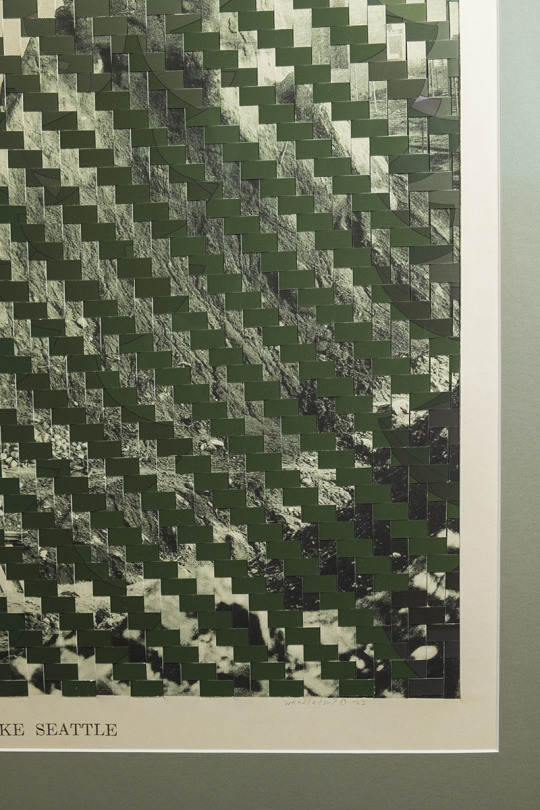
I Went Back to My Territory, But My Territory was Gone
Joe Wahalatsu? Seymour Jr. (Squaxin/Acoma Pueblo)
woven paper, framing. 32.25” x 37.75”
#joe wahalatsu? seymour jr#joe seymour jr#wahalatsu?#weaving#acoma#acoma pueblo#squaxin#indigenous art#native art#first nations art#ndn art
15 notes
·
View notes
Text

Girl, you are pregnant
21 notes
·
View notes
Photo
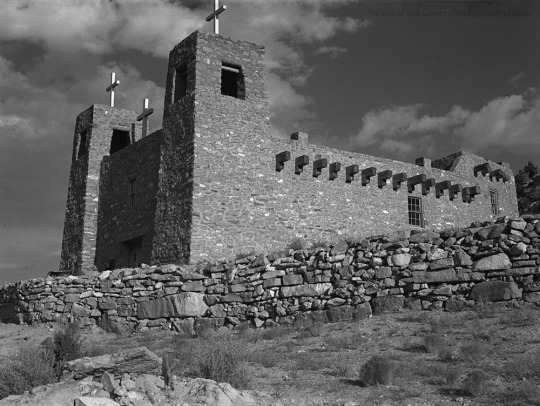
Mission church at McCartys, Acoma Pueblo, New Mexico
Photographer: John Candelario
Date: 1940 - 1950?
Negative Number: 165882
111 notes
·
View notes
Text

Acoma Pueblo potters (New Mexico)
The World of the American Indian, National Geographic, 1974
#indigenous art#indigenous#indigenas#indigenous history#acoma pueblo#ceramics#native art#indigenous artists#folk art#New Mexico#pueblo#vintage#nat geo
97 notes
·
View notes
Text
1 note
·
View note
Photo

Santa Fe Super Chief railcar “Acoma”
Source
0 notes